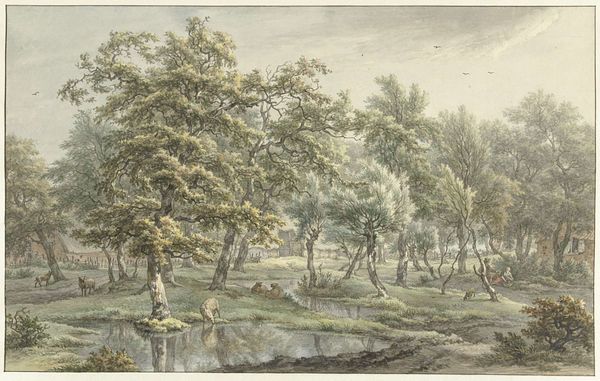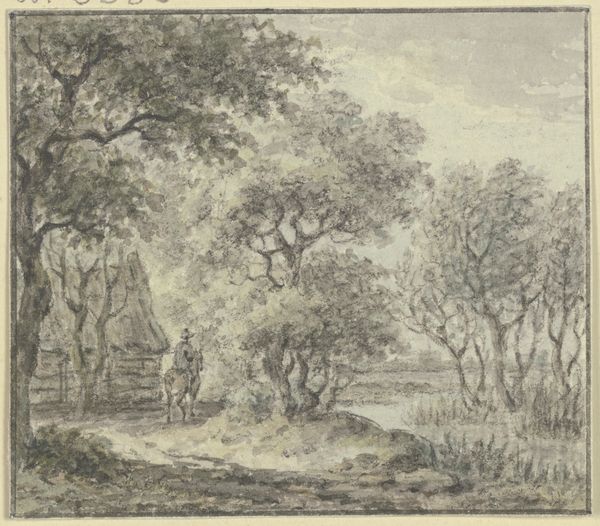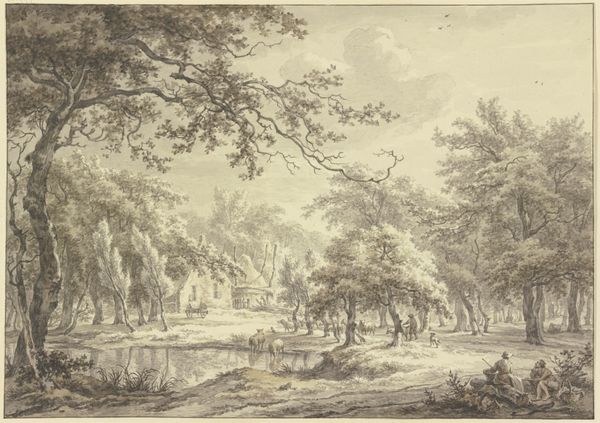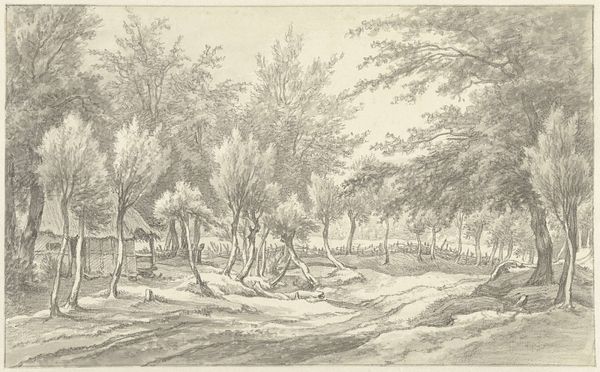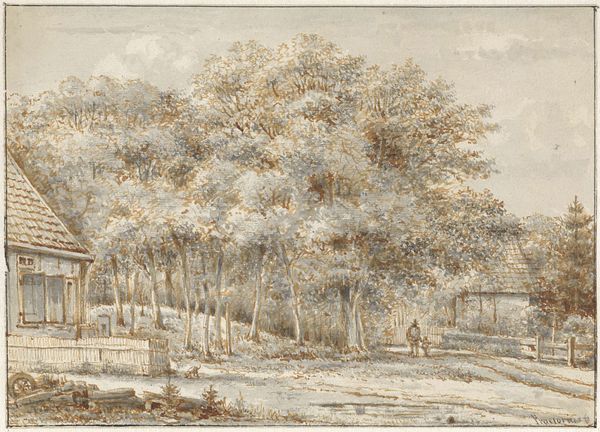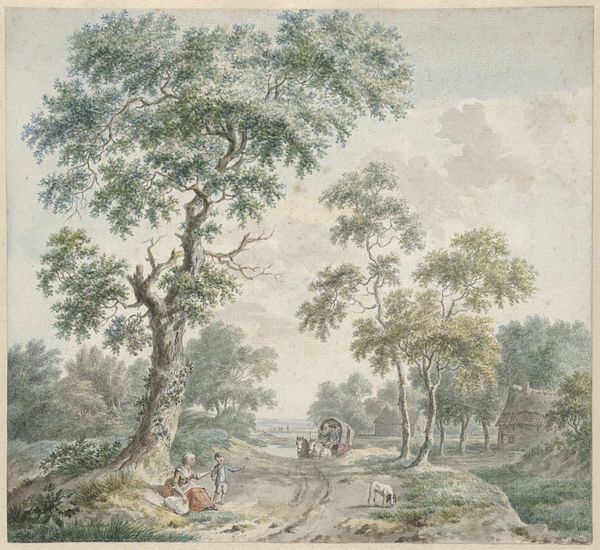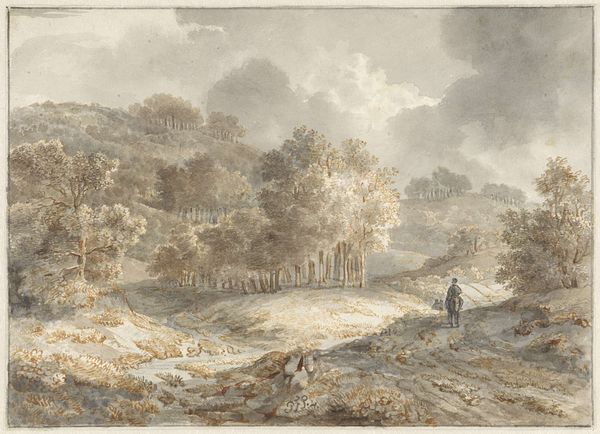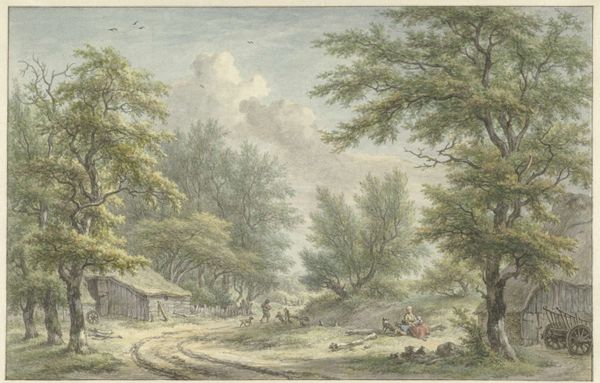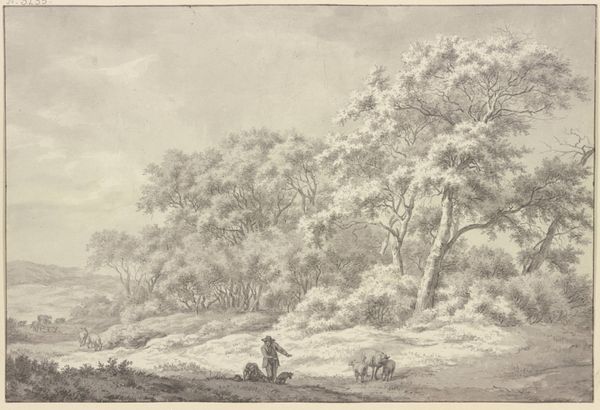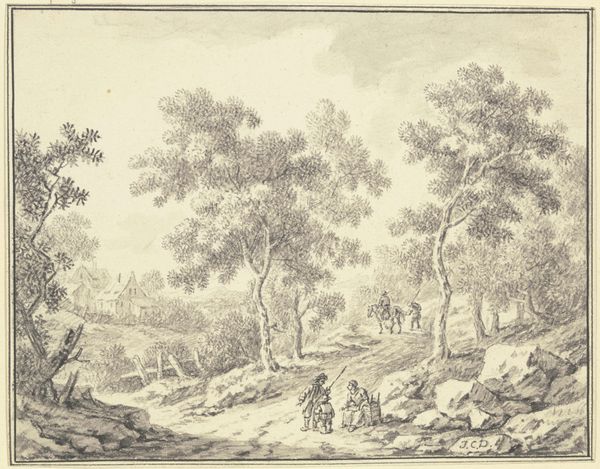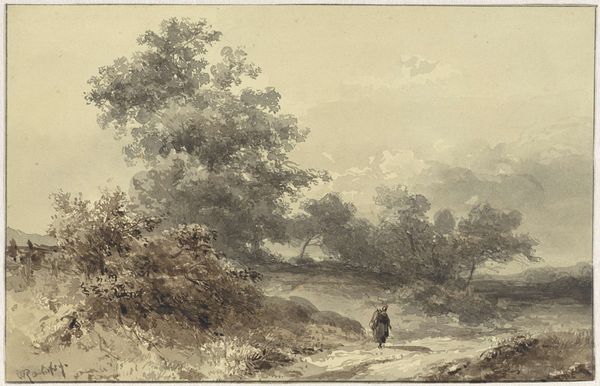
drawing, watercolor, pencil, pen
#
drawing
#
neoclacissism
#
pen sketch
#
pencil sketch
#
landscape
#
watercolor
#
romanticism
#
pencil
#
pen
#
watercolour illustration
Dimensions: height 326 mm, width 521 mm
Copyright: Rijks Museum: Open Domain
Curator: Before us is "Landschap bij Eext (Drenthe)," or "Landscape near Eext (Drenthe)," created in 1793 by Egbert van Drielst. The work, now held at the Rijksmuseum, employs pencil, pen, and watercolor in its construction. What’s your initial take? Editor: It's undeniably tranquil, almost to the point of feeling melancholic. The light feels diffused, and that palette of muted greens and browns lends a serene, contemplative air. There’s a delicate balance, but also something a bit…muted, visually. Curator: The image really pulls you in. Drielst lived in a time when art making involved extensive social networks for procuring the material. Think about the process: handmade paints derived from rare pigments. We see here a landscape that depended on trade relationships as much as natural phenomena. Editor: That's interesting, especially considering the composition. Note the intricate pen work, mimicking the entangled branches and detailed foliage of the trees. The drawing's structure echoes the wildness and romantic spirit typical of the period while displaying skilled draftsmanship. Curator: And this is where materiality really shapes meaning. The relative affordability of the materials, and its convenient dimensions, suggests this was meant for study, and possibly commerce. This romantic ideal of nature isn’t just observed; it’s a commodity being rendered into an object for exchange. It is also rooted in ideas about Dutch nationhood. Editor: I can see that. It gives new significance to what at first glance appeared as a serene, almost unremarkable depiction of nature, no? But what's your read of the arrangement with the peasants to the side near the shack, next to the dense grove? Curator: Van Drielst's portrayal reflects not only nature's beauty but also its connection to human life and social context. Those peasants aren’t just incidental, they reflect an attitude towards society, maybe the importance of a healthy national community that values work, and perhaps a social order in place. Editor: Food for thought. Focusing on its material aspects does challenge one's traditional perception. Curator: Indeed. Approaching the work through its context of production lets us explore its multiple, interconnected meanings, not just as an aesthetic exercise but also as a cultural document. Editor: Well, that certainly reshapes my initial formal analysis. I’m walking away with a more expansive understanding, indeed.
Comments
No comments
Be the first to comment and join the conversation on the ultimate creative platform.
